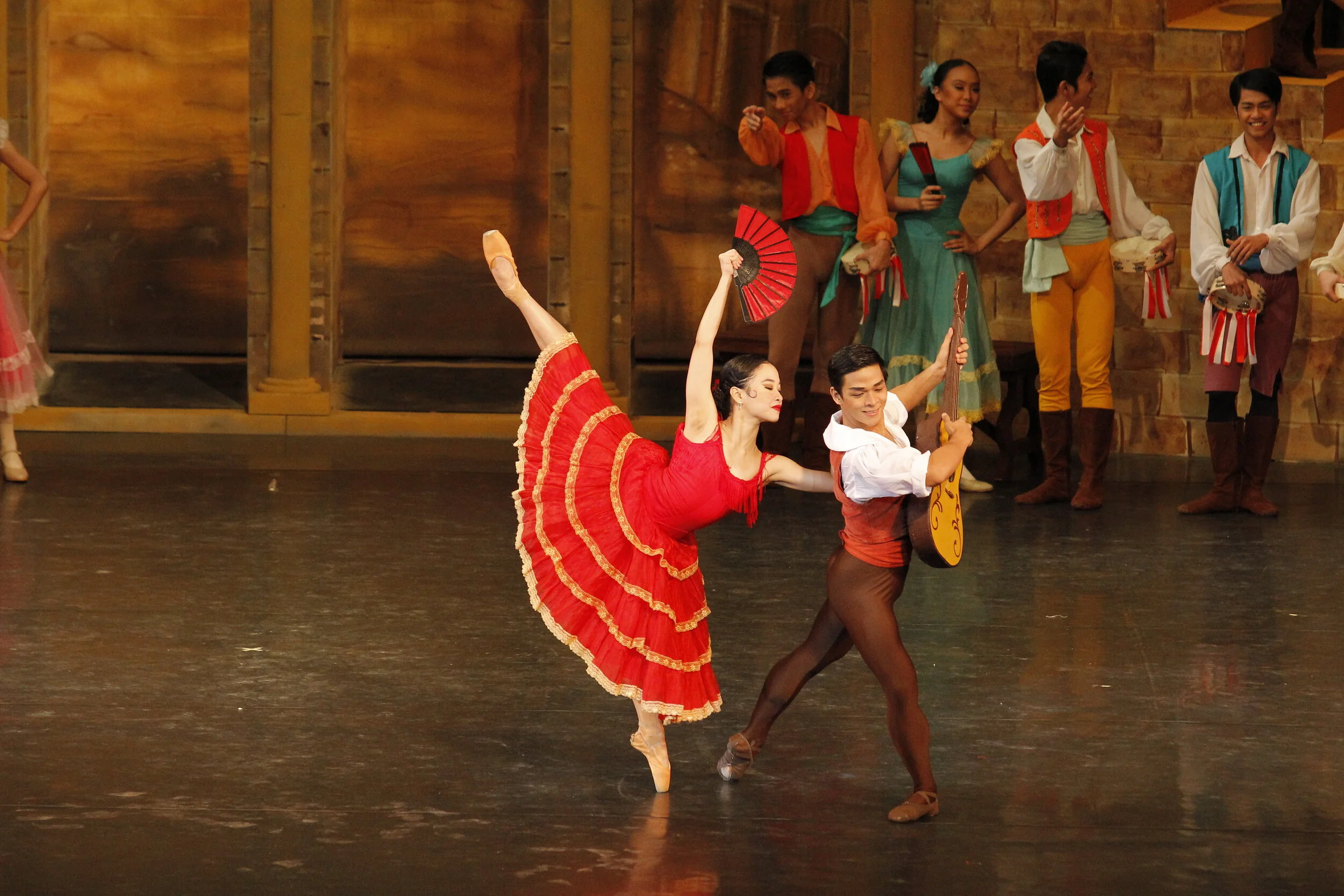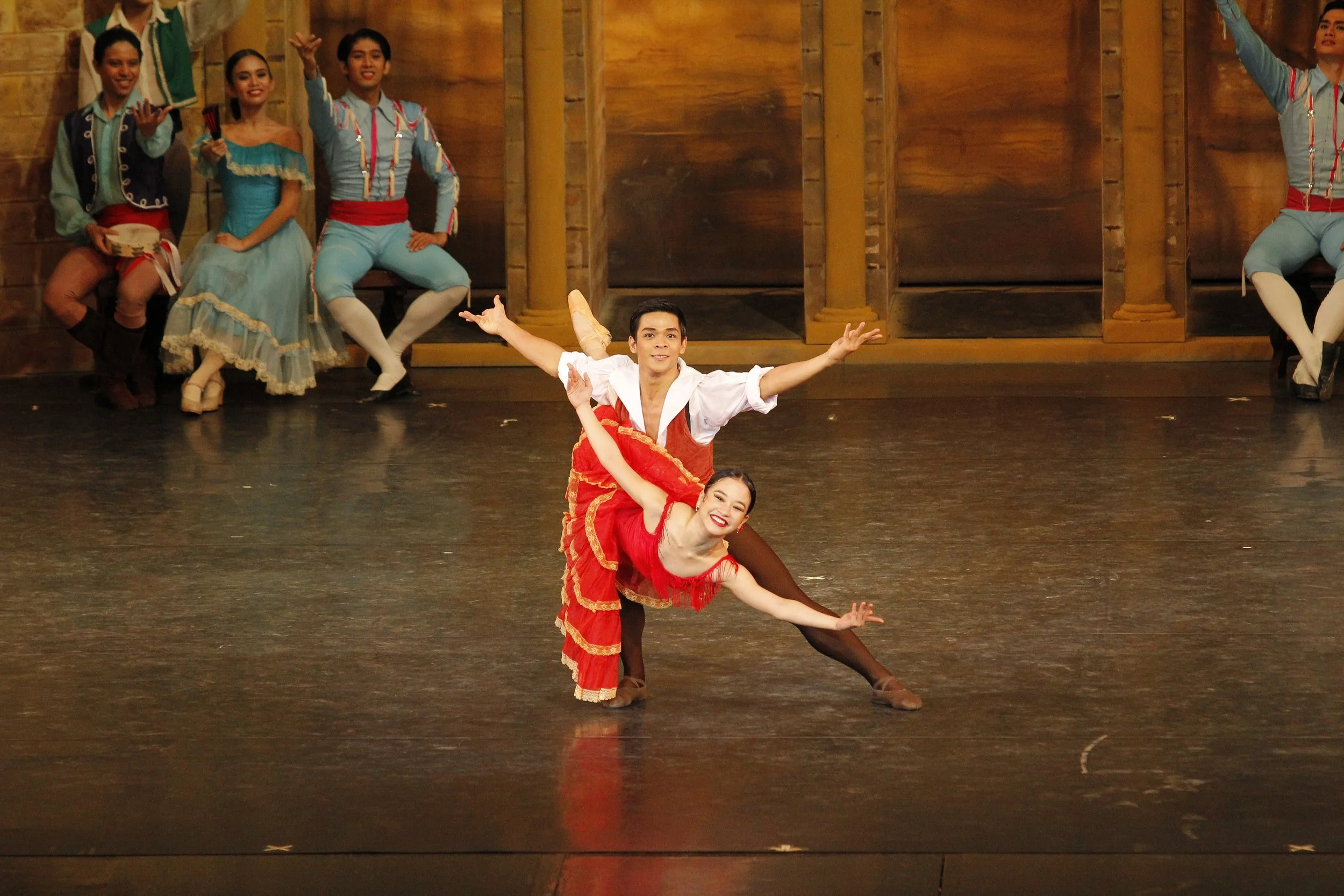Don Quixote: A ballet for all time
Lisa Macuja-Elizalde performed her very first full-length Don Quixote as a soloist for the Kirov Ballet in 1986 opposite Faroukh Ruzimatov. From the Ballet Manila Archives collection
Literature has proven to be an important source of material for choreographers in creating ballets that can stand the test of time. Of these, Don Quixote is arguably the best example.
The novel, entitled The Ingenious Gentleman Don Quixote of La Mancha, was written by Spanish novelist Miguel de Cervantes and was published in two parts: the first installment in 1605, and the second in 1615. It revolves around the escapades of a noble man from La Mancha named Alonso Quixano who, having read so many books, began to live his life as though it were a knightly story.
Of the many pages of that lengthy novel, only two chapters made it to the very first Don Quixote ballet. In 1740, Franz Hilverding, who was serving as a court choreographer in Vienna, zeroed in on the love story between Kitri (the innkeeper’s daughter) and Basilio (the barber) when he premiered the very first Don Quixote ballet. Twenty-eight years later, French dancer and choreographer Jean-Georges Noverre choreographed his own version of Hilverding’s original to the music of Josef Starzer.
Premiere danseur Nonoy Froilan and Cultural Center of the Philippines artist-in-residence Lisa Macuja-Elizalde execute the famous fish dive in Ballet Philippines’ production of Don Quixote in 1986. From the Ballet Manila Archives collection
The father of Russian ballet, Charles Didelot, staged his own version for the Imperial Ballet in St. Petersburg in 1808. A year later, a version was staged by English dancer and choreographer James Harvey D’Egville at Her Majesty’s Theater in London.
The Berlin Court Opera Ballet staged a version of Don Quixote in 1839 by Paul Taglioni. His uncle, Salvatore, staged it at the Teatro Regio, Turin in 1843.
But the Don Quixote which has been the basis for the many versions of the ballet that we know today was the adaptation by Marius Petipa. Commissioned by the Ballet of the Imperial Bolshoi Theatre, the legendary dancer and choreographer created the piece set to the music of Ludwig Minkus. It premiered to a very appreciative audience in 1869 with Wilhelm Vanner as Don Quixote, Vassily Geltser as Sancho Panza, Anna Sobeshchanskaya as Kitri, Sergei Sokolov as Basilio, Dmitri Kuznetsov as Gamache, and Pelagaya Karpakova as Dulcinea.
Not content with its success, Petipa continued to work on the choreography which resulted in an even bigger extravaganza of a ballet consisting of five acts. The grand production was staged by the St. Petersburg Imperial Ballet in 1871 with Timofei Stukolkin in the title role, Alexandra Vergina as both Kitri and Dulcinea, Lev Ivanov as Basilio, and Nikolai Goltz as Gamache.
Philippine Ballet Theater principal artist Lisa Macuja-Elizalde and American Ballet Theater’s Parrish Maynard dance the lead roles of Kitri and Basilio in 1993. From the Ballet Manila Archives collection
Since then, Don Quixote has been a staple in the arsenal of every ballet company in the world. But not all versions were met with applause such as those by Alexander Gorsky in 1900 for the Ballet of the Moscow Imperial Bolshoi, and by the Imperial Ballet of St. Petersburg in 1902. The latter staging, in particular, was described as “a mutilation of Petipa’s original masterpiece.”
But despite these setbacks, the ballet itself remained popular among balletomanes. It became part of the repertoire of various companies with versions by Fyodor Lopukhov in 1923 and Pyotr Gusev in 1946 for the Leningrad Kirov Theatre, and by Rostislav Zakharov and Kasyan Goleizovsky in 1940 for the Moscow Bolshoi Theatre.
Don Quixote was also performed by the Pavlova Company of the legendary Anna Pavlova, who introduced the production to other countries in her various tours. Ninette de Valois mounted her version for The Royal Ballet in 1950, marking the first time that a full-length version of the ballet was performed outside of Russia.
Rudolf Nureyev created his own version in 1966 for the Vienna State Opera Ballet. He eventually followed this up with a film version that he worked on with the Australian Ballet. Australian Ballet’s co-director Robert Helpmann took on the role of Don Quixote.
As Ballet Manila principal artists in 1997, Osias Barroso and Lisa Macuja-Elizalde performed the full-length Don Quixote in Krasnoyarsk and other Russian cities with local companies. From the Ballet Manila Archives collection
George Balanchine choreographed a modern version in 1965 for the New York City Ballet where he himself appeared as Don Quixote. Mikhail Baryshnikov also staged his own version with the American Ballet Theater in 1980. His version would go on to become a popular version for restaging among various other companies including The Royal Ballet.
Philippine prima ballerina Lisa Macuja-Elizalde performed her very first full-length Don Quixote as a soloist for the Kirov Ballet on January 8, 1986 opposite Faroukh Ruzimatov. Kitri would become her signature role, taking on the challenging 32 fouettes with ease.
Upon her return to the Philippines that same year, she again performed the role as the Cultural Center of the Philippines’ first artist-in-residence, this time with Ballet Philippines opposite premiere danseur Nonoy Froilan. In 1993, as principal dancer of Philippine Ballet Theater, she danced as Kitri with two Basilios – guest artists Parrish Maynard and Wes Chapman, both of American Ballet Theater.
It was no surprise that upon forming Ballet Manila in 1995, Don Quixote would become part of the company’s repertoire even when the troupe consisted only of 12 dancers. Excerpts were performed by Macuja-Elizalde with her dancing partner Osias Barroso. During a guest tour of Russia which included Moscow, Ulan-Ude, Yakutsk, Krasnoyarsk, and Norilsk, the pair would perform the full-length version with various local companies.
Don Quixote has been featured in 12 of Ballet Manila’s 25 seasons. But the ballet has a presence in the company’s repertoire every year through the performances of excerpts in concert tours and competitions, ultimately proving that literature and dance combined can create a powerful masterpiece that can withstand the test of time.







